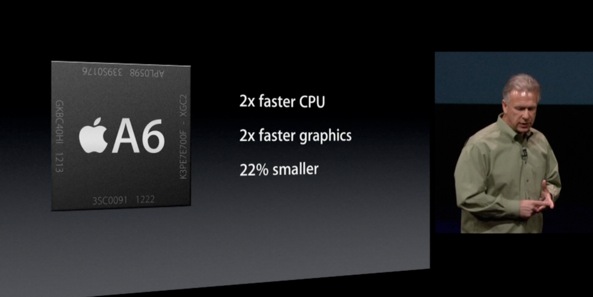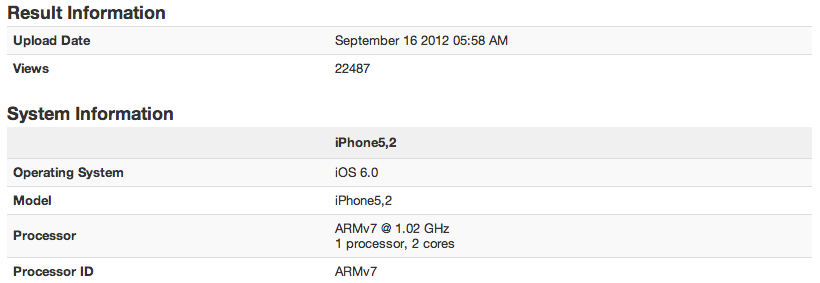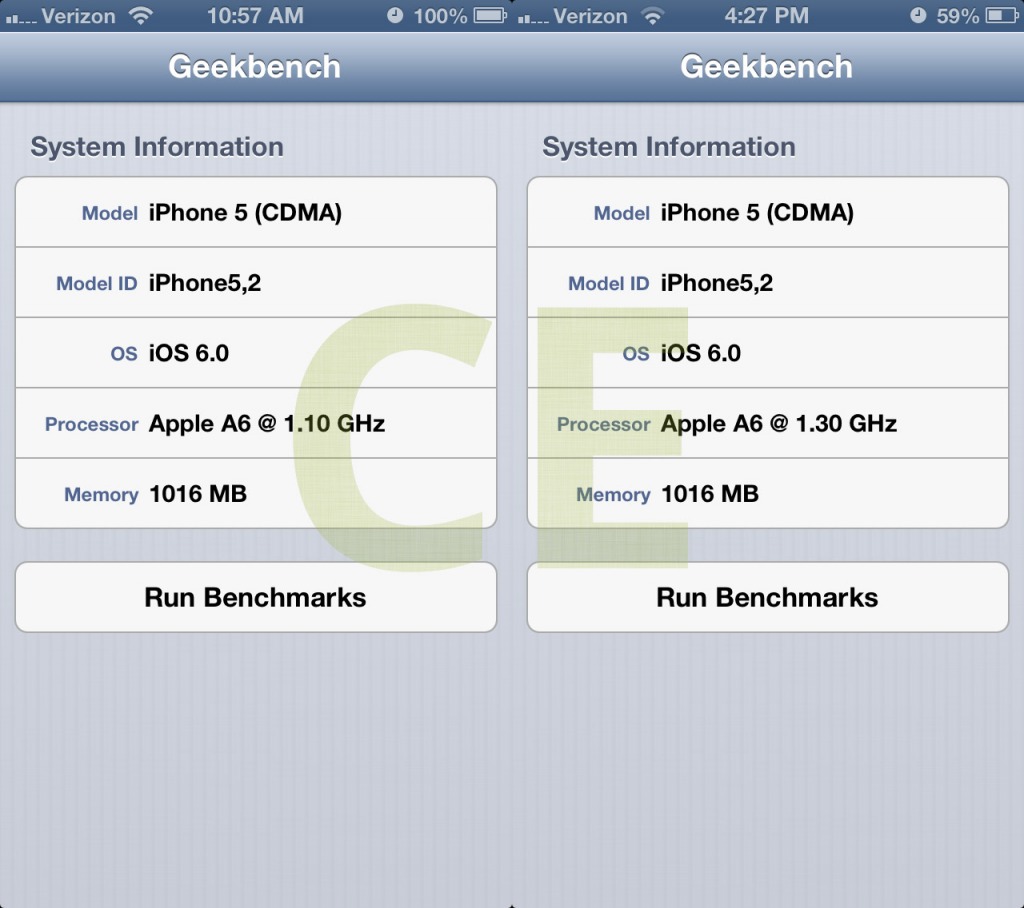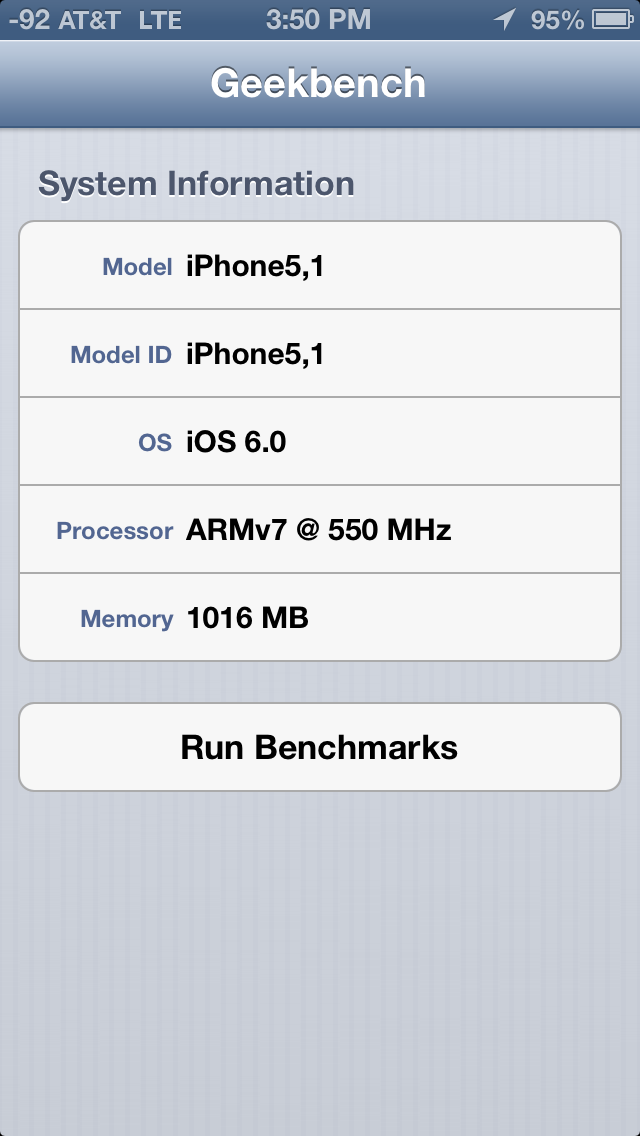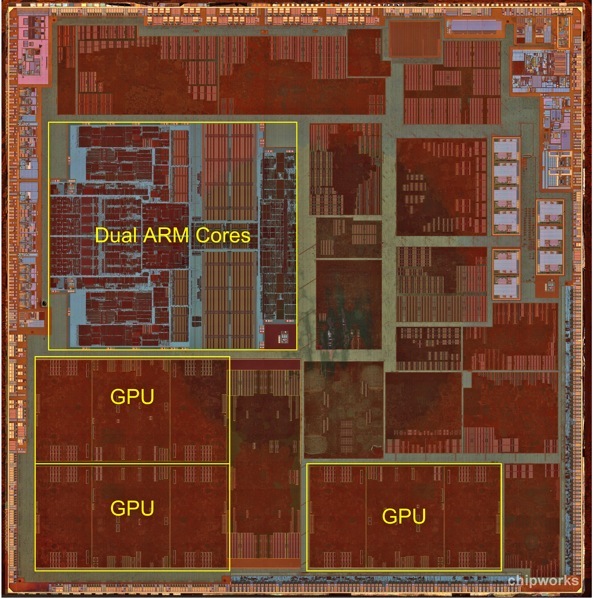The A6 chip which debuted on the iPhone 5 earlier this month can do some pretty clever tricks, stemming from a heavily customized ARMv7 design. Benchmark data suggests that the A6 can dynamically overclock itself to up to 1.3GHz and downclock to just 500MHz, depending on workload.
This is nothing new in chip design, of course (just ask Nvidia or Qualcomm). But given that Apple designs its chips in-house based on ARM and Imagination Technologies blueprints, it shows just how far along Cupertino is versus companies that use off-the-shelf chips which are not as power or performance-efficient as the A6…
The A6 was originally thought to be clocked at 1.02GHz, per first Geekbench benchmark.
Current Editorials was able to see the chip up-clocked to 1.1GHz as well as 1.3GHz.
9to5Mac was able to see the chip’s speed drop to as low as 550MHz.
Apple’s application processor designs, via TechInsights. Click for larger.
TLD Today has a nice video showing the A6 chip being Geekbench’d.
This is what the A6 chip looks under a microscope.
So-called floorplan of the A6 chip reveals two ARM processing cores and three GPU cores. Photo courtesy of Chipworks.
Apple rates the A6 chip as being twice as fast in CPU and GPU performance.
At any rate, it looks like Apple’s acquisitions of chip experts PA Semi, Intrinsity, Anobit and AuthenTec is paying off now as the iPhone 5’s customized A6 chip appears to dynamically upclock and downclock its speed depending on workload, helping optimize battery life.
One more thing: AppleInsider claims that Apple is actively courting Texas Instruments engineers to help advance iOS processors.
Apple has been actively courting experienced employees at TI to help design and support its internal A-series chips. Unlike TI, which had to account for significant overhead with its chip clients related to managing documentation and support for various OMAP chips and features, Apple is the only consumer of its internally designed A-series chips. That frees the company to focus on building only what it wants and needs, and it doesn’t have to communicate with third parties about the intricacies of how its silicon works.
This is interesting because the chip maker announced earlier this week plans to focus more on specialized industries amid strong competition in the mobile space, where Nvidia, Samsung and Apple produce the vast majority of silicon used in tablets and smartphones.
Even though Texas Instruments has been scoring design wins, particularly in tablets, Apple and Samsung aren’t buying any chips from Texas Instruments.
Thoughts?
